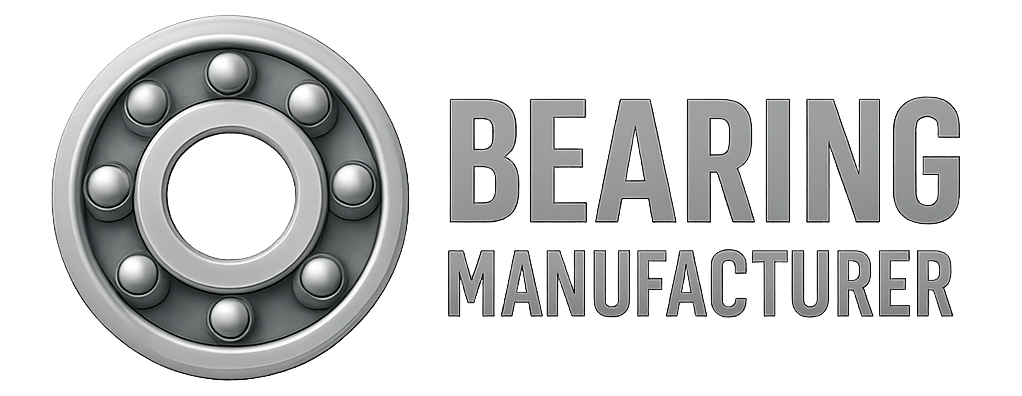Roller bearings are fundamental components in industrial machinery, enabling smooth motion, reducing friction, and supporting both radial and axial loads. Among the many types of roller bearings, tapered roller bearings and spherical roller bearings are frequently used in heavy-duty applications. Understanding the differences between these two is essential for equipment designers, maintenance engineers, and procurement professionals alike.
Tapered Roller Bearings
Tapered roller bearings are designed with conical rollers that taper inward, aligning with a point on the bearing axis. This geometry allows them to handle combined axial and radial loads efficiently, making them highly effective in high-precision and high-load environments.
🔩 Structure Highlights
-
Tapered inner and outer raceways
-
Rollers guided by a flange on the inner ring
-
Typically separable into cone and cup assemblies
✅ Advantages
-
High Load-Carrying Capacity: Due to a large contact area, tapered roller bearings support heavy combined loads.
-
Precision Operation: Excellent dimensional stability and running accuracy.
-
Dual Load Support: Handles both axial and radial forces simultaneously.
📌 Common Applications
-
Automotive wheel hubs (trucks, trailers, passenger cars)
-
Industrial gearboxes and reducers
-
Construction and mining equipment
-
Agricultural machinery
⚠️ Limitations
-
Not ideal for high-speed environments due to increased friction from tapered contact.
-
Sensitive to misalignment — requires precise installation.
-
More complex mounting/dismounting compared to simpler bearing types.
Spherical Roller Bearings
Spherical roller bearings consist of two rows of barrel-shaped rollers running between an inner ring and a spherically-contoured outer ring raceway, allowing for automatic self-alignment. They are well-suited for high-load, low-to-moderate-speed applications—especially where shaft deflection or misalignment occurs.
🔩 Structural Characteristics
-
Double-row design
-
Spherical outer raceway
-
Barrel-shaped rollers aligned at an angle
✅ Key Advantages
-
Self-Alignment Capability: Automatically compensates for shaft misalignment and deflection.
-
Robust Load Handling: Supports heavy radial loads and moderate axial loads.
-
Durable in Harsh Conditions: Performs well in contaminated or misaligned installations.
📌 Typical Use Cases
-
Wind turbine main shafts
-
Mining conveyors and crushers
-
Pulp and paper mill machinery
-
Heavy-duty industrial gearboxes
⚠️ Limitations
-
Lower speed capability than other bearing types.
-
Larger and heavier design may not suit compact applications.
-
Higher cost due to complex geometry and material requirements.
🔍 Comparative Analysis: Tapered vs. Spherical Roller Bearings
| Feature | Tapered Roller Bearings | Spherical Roller Bearings |
|---|---|---|
| Load Handling | Combined axial and radial loads | High radial and moderate axial loads |
| Alignment Capability | Requires precise alignment | Self-aligning, tolerates shaft misalignment |
| Precision | High precision for demanding applications | Less precise, prioritizes alignment tolerance |
| Speed Suitability | Moderate, not ideal for high speeds | Lower speed range |
| Size & Weight | More compact for given load | Generally larger and heavier |
| Ease of Maintenance | Requires careful alignment and adjustment | More forgiving to alignment errors but still needs regular inspection |
| Cost | Typically lower unit cost | Higher initial cost due to advanced design |
🧭 How to Choose the Right Bearing
Selecting between tapered and spherical roller bearings requires a detailed understanding of the operating environment and load conditions:
📌 Key Decision Criteria
-
Load Direction and Magnitude
-
Tapered: Ideal for combined heavy axial and radial loads
-
Spherical: Best for high radial loads with misalignment risks
-
-
Misalignment Conditions
-
Spherical bearings are more suitable where shaft alignment is hard to control
-
-
Speed and Heat
-
Tapered bearings are better for moderate-speed, cooler environments
-
Spherical bearings may require additional cooling in high-speed setups
-
-
Precision Requirements
-
For high-precision tasks (gearboxes, automotive wheels), tapered bearings are preferred
-
-
Maintenance Strategy
-
Tapered bearings require more careful alignment
-
Spherical bearings reduce downtime due to misalignment but still require regular lubrication and checks
-
🛠 Practical Examples
| Application | Recommended Bearing Type | Reasoning |
|---|---|---|
| Automotive wheel hubs | Tapered Roller Bearing | Requires precision and combined load handling |
| Wind turbines (main shaft) | Spherical Roller Bearing | Tolerates misalignment, handles high radial load |
| Mining equipment (vibrating screen) | Spherical Roller Bearing | Endures shock and load variation with alignment errors |
| Precision gearbox | Tapered Roller Bearing | Demands high accuracy and controlled loading |
🧾 Final Thoughts
Both tapered and spherical roller bearings have distinct strengths and limitations. Tapered bearings excel in high-precision, heavy combined-load applications, whereas spherical bearings shine in challenging environments with shaft misalignment and predominantly radial loads.
Choosing the correct bearing type ensures not only optimal performance but also reduces maintenance costs and downtime. Always consider application-specific factors such as load, speed, alignment, and maintenance infrastructure before making a selection.
